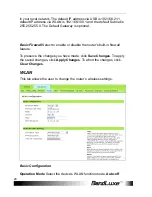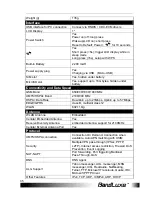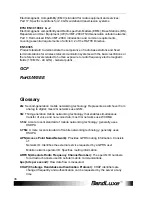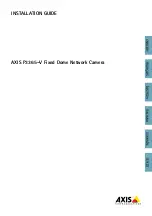
Appendices
38
Electromagnetic Compatibility (EMC) standard for radio equipment and services;
Part 17: Specific conditions for 2.4 GHz wideband transmission systems.
ETSI EN 301 908-1 & -2
Electromagnetic compatibility and Radio spectrum Matters (ERM); Base Stations (BS),
Repeaters and User Equipment (UE) for IMT-2000 Third Generation cellular networks;
Part 1: Harmonised EN for IMT-2000, introduction and common requirements,
covering essential requirements of article 3.2 of the R&TTE Directive.
EN 50385
Product standard to demonstrate the compliance of radio base stations and fixed
terminal stations for wireless telecommunication systems with the basic restrictions or
the reference levels related to human exposure to radio frequency electromagnetic
fields (110 MHz - 40 GHz) - General public.
GCF
RoHS/WEEE
Glossary
2G:
Second-generation mobile networking technology. Represents a switchover from
analog to digital; most 2G networks use GSM.
3G:
Third-generation mobile networking technology that enables simultaneous
transfer of voice and non-voice data; most 3G networks use WCDMA.
3.5G:
A more recent standard of mobile networking technology; generally uses
HSDPA.
3.75G:
A more recent standard of mobile networking technology; generally uses
HSUPA.
APN (Access Point Name/Network):
Provides GPRS routing information. Consists
of:
Network ID: Identifies the external service requested by a GPRS user.
Mobile network operator ID: Specifies routing information.
ARFCN (Absolute Radio Frequency Channel Number):
The specific ID numbers
for all radio channels used in cellular mobile communications.
bps (bits per second):
How data flow is measured.
CHAP (Challenge Handshake Authentication Protocol):
CHAP identifiers are
changed frequently and authentication can be requested by the server at any
time.



































